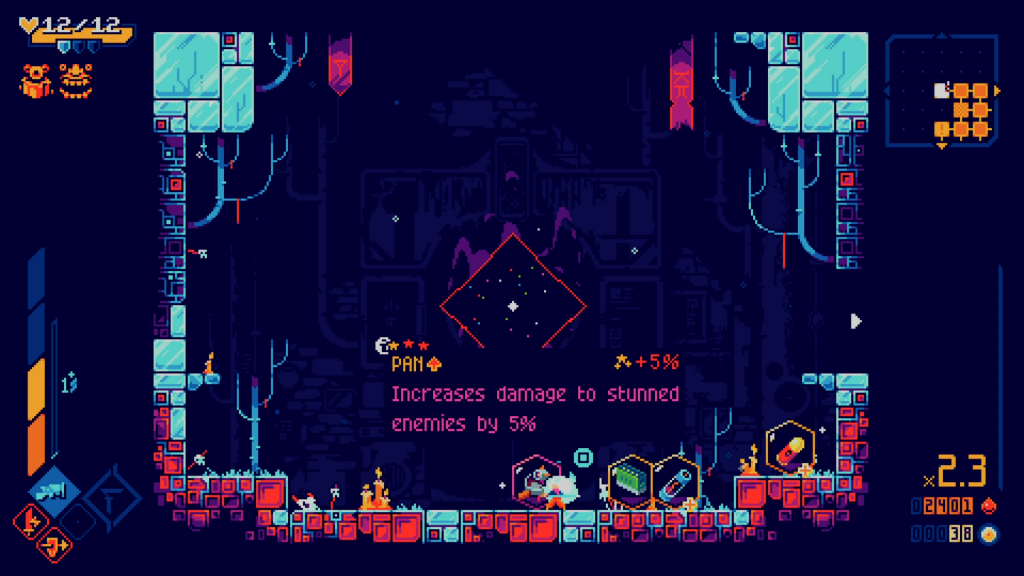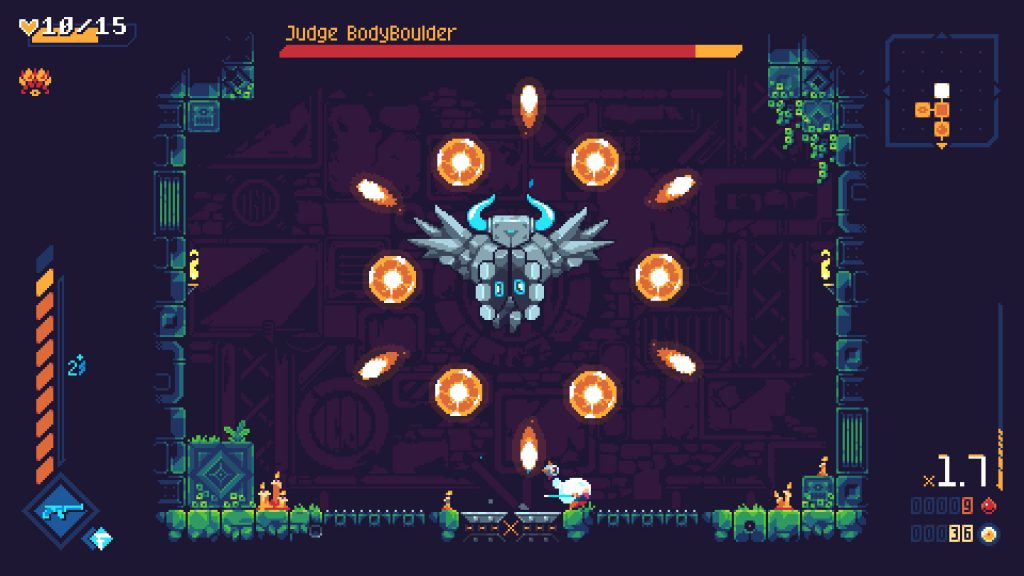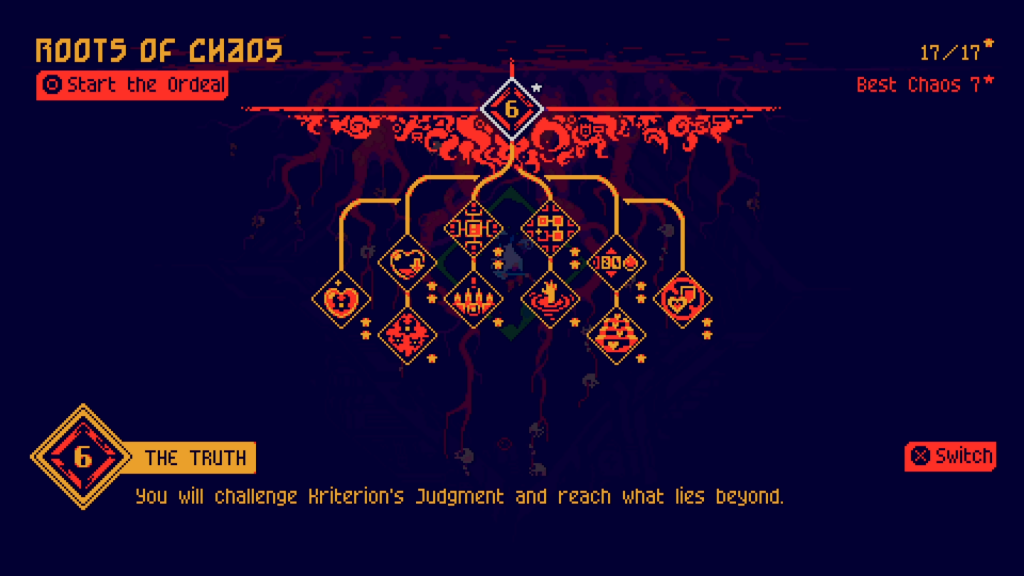Recently we’ve seen a rise in roguelite titles, with each developer offering their own take. Some use random guns, others crazy supplies but ScourgeBringer keeps it simple and focuses on speed. It’s a novel concept that makes for a unique take but with so many other similar titles releasing, is ScourgeBringer a cut above or was it too slow?
There really isn’t much of a story in ScourgeBringer. Players control Kyhra, a deadly warrior, who ventures through a post-apocalyptic world with weird machines and monsters. At most details are alluded to, with the ending, eventual decoding of messages, alternate paths, and more giving players an idea of what happened. This might be underwhelming for some, though it’s an adventure centered around gameplay.

At first, ScourgeBringer feels oddly intimidating. Players are given a pistol, sword and told the basics. Essentially, there is a slash, a wide slash that can reflect bullets, a gun that is great for fighting faraway enemies, and a dash to get around the room. ScourgeBringer makes it perfectly clear dash is not meant to be a dodge and will not grant free invincibility frames. This choice requires a slight learning curve, especially once enemies were trying to kill me.
To make the fast-paced combat work, ScourgeBringer is all about kill orders. Even if any enemy can potentially kill you, there is a small handful that poses an immediate threat. The best way to handle these enemies is to either bait and reflect bullets or rush, stun lock and kill. Certain enemies, situations, and layouts will push one playstyle over another, though it ultimately comes down to being smart. Especially once bosses are introduced.

Bosses act as a strong contrast to the standard gameplay loop. Against peons, Kyra is an oppressive force that will dominate anyone who gets in her way. Bosses typically can’t be stopped or really stunned for long, with moves that force Kyhra to react to them. Typically this results in a lot of bullets or attacks that require a specific action if players want to avoid taking damage. Many of these will test your skill, sometimes leading to it being much easier to just take the damage. That being said, bosses also build upon the need to master defensive techniques.
Outside of different guns, most items simply enhance Kyhra’s abilities. Stun for longer, more health, perhaps a heal or more health, things like that. As a result, players simply can’t wait until they get a more lucrative run and instead need to use enemies’ weapons against them. For example, even without a lot of good perks, it’s entirely possible to reflect one of the first bosses’ attacks and deal 20 percent or more damage to it. Naturally, it’s a risky play, any time bullet reflection comes into play there is the chance of taking damage, though the reward is there. Often times there is enough forgiveness to make it manageable, but it’s without question the more important skill in ScourgeBringer.

Upon finishing-off mini-bosses and bosses players will unlock the ability to buy skills. Most of these just enhance Kyhra’s core abilities or make runs a little more forgiving. In addition to that, finishing the fifth realm will unlock a node that enables challenge mode.
Unlike most challenge modes, ScourgeBringer offers 17 distinct tasks that increase difficulty. The only important one is the ability to venture to the sixth and final realm, with the rest largely changing how gameplay flows or impacting stats. Very few of them actually change the core experience, just now enemies do more damage, layouts are often less forgiving, or little to no health pick-ups.
At this point many of the struggles become apparent. Where similar games offer seemingly endless variety, ScourgeBringer offers the same experience with more difficulty. There aren’t hidden bosses, esoteric mechanics, shamefully rare spawns, just different takes on the core concept. I would argue things are difficult enough to give players a good value, longevity just hinges on speed or difficult runs.
ScourgeBringer Review – Verdict
ScourgeBringer is in a weird place where it’s a novel concept, it’s just a question of how it all comes together. There have been efforts to bridge the gap in difficulty, like making it more accessible, though it’s a fast-paced game that requires good timing. This will resonate with some, maybe even to the point where they chase after all the challenge stars, with most doing two or three runs and finishing. Given the price, it’s still a good value, though it hinges on how much value that provides.
[Editor’s Note: ScourgeBringer was reviewed on PlayStation 5 and a copy was provided to us for review purposes.]
